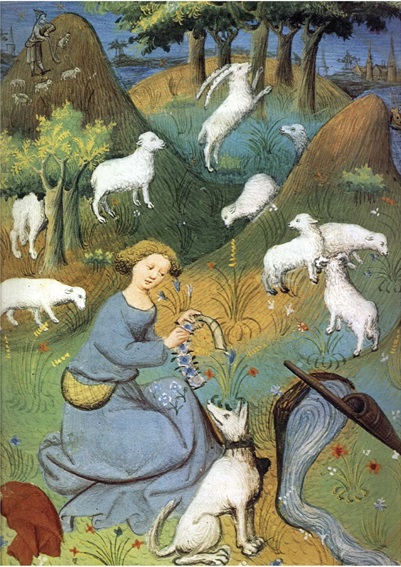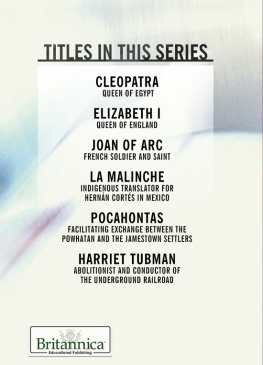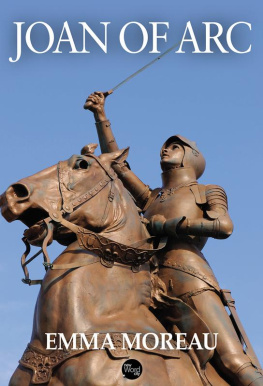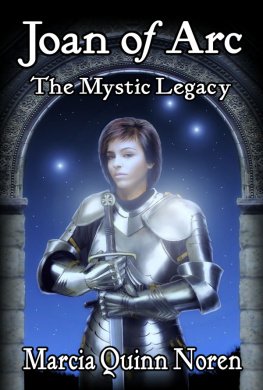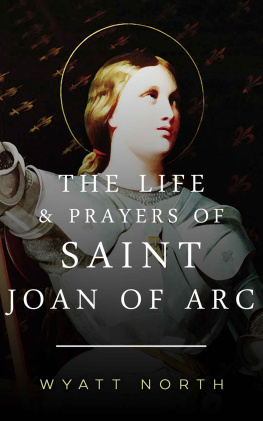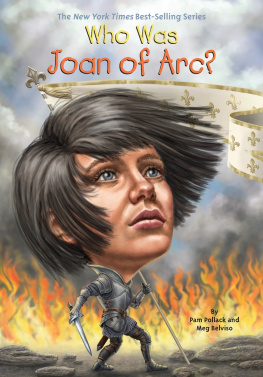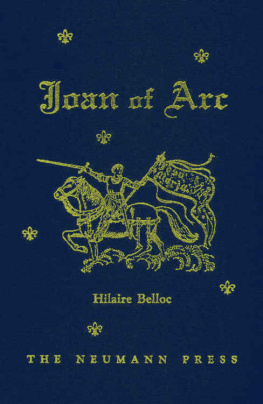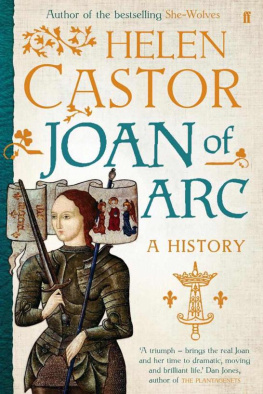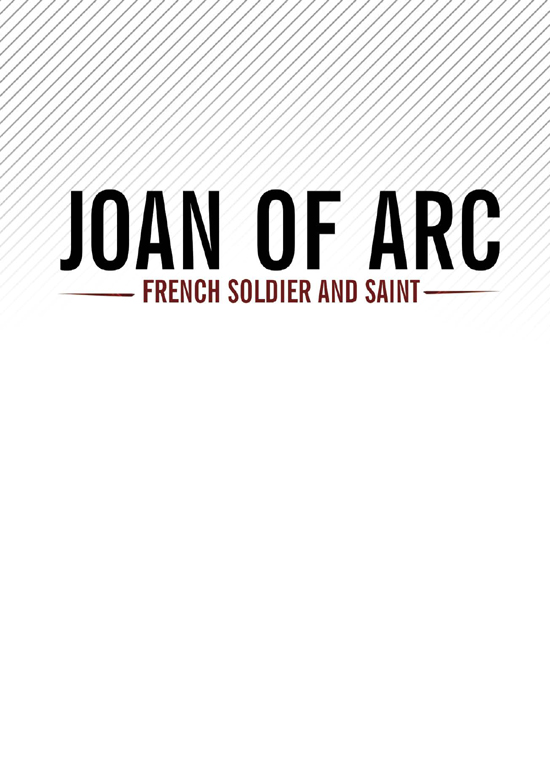

Published in 2018 by Britannica Educational Publishing (a trademark of Encyclopdia Britannica, Inc.) in association with The Rosen Publishing Group, Inc.
29 East 21st Street, New York, NY 10010
Copyright 2018 The Rosen Publishing Group, Inc. and Encyclopdia Britannica, Inc. Encyclopdia Britannica, Britannica, and the Thistle logo are registered trademarks of Encyclopdia Britannica, Inc. All rights reserved.
Distributed exclusively by Rosen Publishing.
To see additional Britannica Educational Publishing titles, go to rosenpublishing.com.
First Edition
Britannica Educational Publishing
J.E. Luebering: Executive Director, Core Editorial
Andrea R. Field: Managing Editor, Comptons by Britannica
Rosen Publishing
Heather Moore Niver: Editor
Nelson S: Art Director
Michael Moy: Designer
Cindy Reiman: Photography Manager
Heather Moore Niver: Photo Researcher
Library of Congress Cataloging-in-Publication Data
Names: Wolny, Philip, author.
Title: Joan of Arc : French soldier and saint / Philip Wolny.
Description: New York : Britannica Educational Publishing in association with Rosen Educational Services, [2018] | Series: Women who changed history | Includes bibliographical references and index. | Audience: Grades 5-8.
Identifiers: LCCN 2016057946| ISBN 9781680486483 (eBook)
Subjects: LCSH: Joan, of Arc, Saint, 1412-1431Juvenile literature. | Christian women saintsFranceBiographyJuvenile literature. | FranceHistoryCharles VII, 1422-1461Juvenile literature.
Classification: LCC DC103.5 .W65 2018 | DDC 944.026092 [B] dc23
LC record available at https://lccn.loc.gov/2016057946
Manufactured in the United States of America
Photo credits: Cover Jean-Jacques Scherrer/Art Images/Getty Images; pp. 7, 31, 41 Photos.com/Jupiterimages; p. 9 Patrick Hertzog/AFP/ Getty Images; pp. 10, 17 Photo 12/Universal Images Group/Getty Images; p. 13 Keystone-France/Gamma-Keystone/Getty Images; p. 14 Hulton Archive/Getty Images; p. 19 Three Lions/Hulton Archive/Getty Images; p 21 Henry Guttmann/Hulton Archive/Getty Images; p. 22 Culture Club/Hulton Archive/Getty Images; pp. 25, 43 De Agostini Picture Library/De Agostini/Getty Images; p. 27 DEA/M. Seemuller /DeAgostini/Getty Images; p. 28 Print Collector/Hulton Fine Art Collection/Getty Images; p. 30 Universal Images Group/Getty Images; p. 33 Harlingue/Roger Viollet/Getty Images; p. 34 Bibliotheque Nationale, Paris, France/Bridgeman Images; p. 36 Leemage/Corbis Historical/Getty Images; p. 39 Everett Historical/Shutterstock.com; p. 44 railelectropower/iStock/Thinkstock.
Contents
CHAPTER ONE
THE VISIONS OF A YOUNG WOMAN
CHAPTER TWO
MEETING DESTINY
CHAPTER THREE
GOING TO WAR
CHAPTER FOUR
HEROINE OF FRANCE
CHAPTER FIVE
PRISONER, MARTYR, AND SAINT
M ore than six hundred years ago, in the early fifteenth century, the nation of France was at war with England. They had been in conflict off and on for decades, since 1337, over who would control much of the territory of France itself. This set of conflicts was known as the Hundred Years War, and it occurred toward the end of what we now call the Middle Ages, the period of European history that included the era of knights and chivalry.
By the early 1400s, Frances luck against the English seemed to have faded. While France was, for the most part, richer, larger, and more populous, the English often had the upper hand. Their better weapons, including their longbows, allowed them to frequently beat back much larger French forces, including the knights mounted on horseback, called cavalry.
The newest stage in the war, called the Lancastrian War, began in 1415 with the English invasion of the northwest coastal area of France known as Normandy. England soon gained control of about one-third of French territoryall of France north of the Loire River, including Paris. It was a time in which the French struggled for hope.
Even as the English seemed unstoppable, hope was bound to return, even if the French did not know it yet. Around 1412 a baby named Joan had been born in a small village called Domrmy in the eastern countryside. Her parents, Jacques dArc and Isabelle Rome, were landowners and farmers, and respected members of their village.
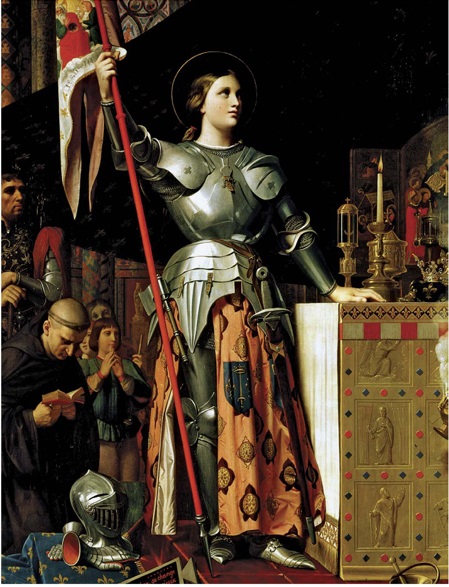
This 1854 painting by Jean-Auguste-Dominique Ingres, entitled Joan of Arc at the Coronation of Charles VII in Reims Cathedral , depicts the heroine at the moment of one of her greatest triumphs.
Under normal circumstances, Joan would probably have grown up to live a quiet, regular life. She and her four siblings were well off enough, and perhaps Joan would have been married to another middle-class farmer in the area. Most womenand even men, for that matter, unless they were bound for jobs in the clerical or legal fields, or for university studiesdid not learn to read or write. Joan lived pretty much the same life and did the same things as her siblings and peers of her age.
Most women who were famous or influential then were royalty, or otherwise married into power or influence. But an entirely different life and destiny lined up for the young woman who would become known as the Maid of Orlans. Rather than remain in her small village, she would defy the typical roles a girl and woman usually took during this era. Joan of Arc would instead become one of the most romantic figures in European history. She would become a leader, a warrior, and a French national hero. To the enemies of her people, the English, she would be a thorn in their side, and a heretic. But she would also be a reputed prophet and holy messenger who would become famous for her heroism, devotion, and ultimate sacrifice for her faith and nation. Eventually she would even become a saint.

T he tiny village of Domrmy rarely figured into important events. Less than two hundred people lived there, mostly growing crops or making wine. Most French people were faithful Roman Catholics, and Domrmys villagers were no different. As historian Donald Spoto writes in Joan: The Mysterious Life of the Heretic Who Became a Saint , faith and its practice were mainstream aspects of medieval life, and the language of faith was like a common country in which all people lived.
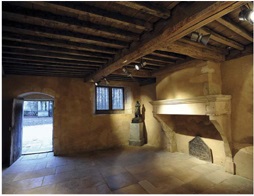
This image shows a room in the house where Joan is believed to have been born, in modern-day Domrmy-la-Pucelle, France.
A Responsible Child
Joan of Arc (in French Jeanne dArc) was probably born in 1412, although some accounts say it may have been a year earlier. At the time, few people cared very much about their exact date of birth or age, and these were mostly not recorded in any official way. Joan learned to spin, sew, and cook, and also to love God. Though most young people prayed, Joan was known for being particularly devout, and prayed in church much of the time.
